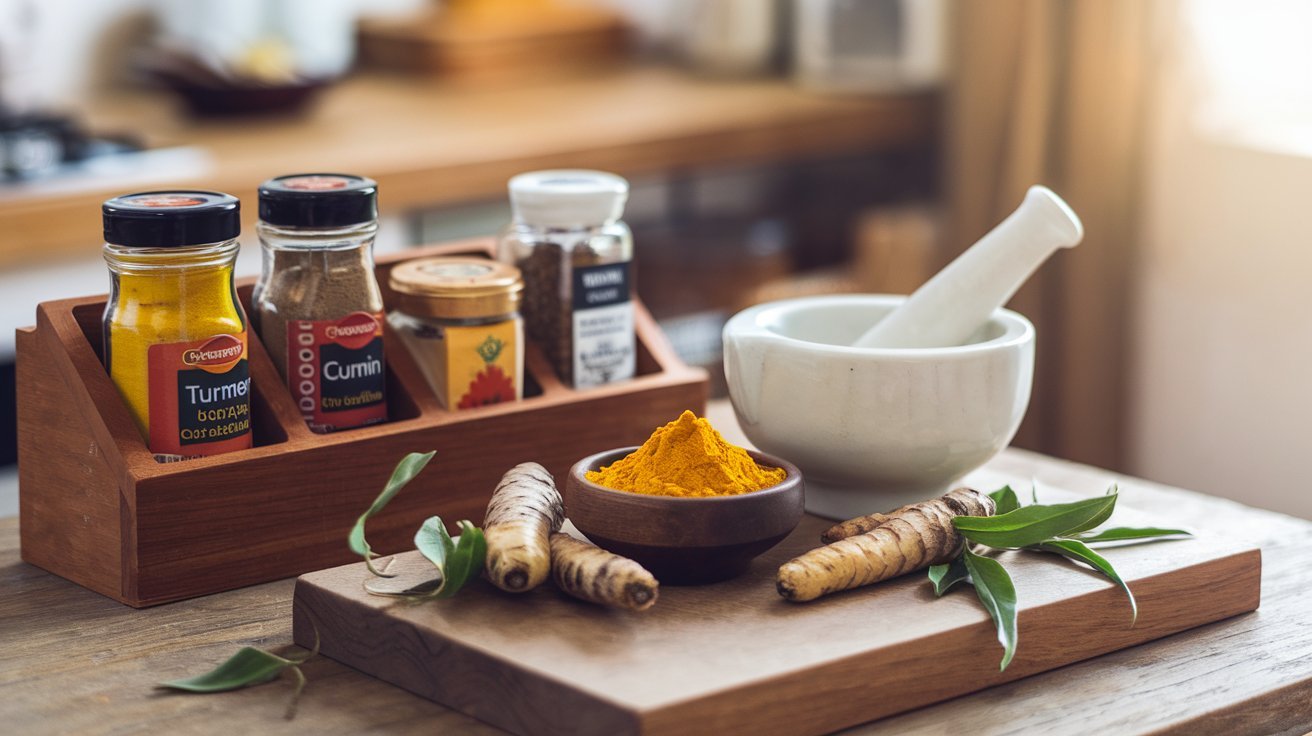Explore Healthy Living
The first time I saw turmeric, it was in my grandmother’s kitchen. She used to say, “A pinch of turmeric can brighten a dish and heal the body.” I never quite understood the depth of her words until I started cooking with it myself. The deep golden color, the earthy aroma, the slightly bitter yet warm taste—it’s more than just a spice. Turmeric is a tradition, a remedy, and a secret ingredient to both delicious meals and a healthier life.
Turmeric has been used for centuries in various cuisines, from Indian curries to Middle Eastern stews. But beyond its role in cooking, this golden spice holds remarkable health benefits. If you’ve ever wondered how to make the most of turmeric in your kitchen, this guide is for you. Let’s dive into the wonders of turmeric and how it can transform your meals and well-being.
Health Benefits of Turmeric
Turmeric is widely recognized for its healing properties, thanks to its active compound, curcumin. Here are some of its top benefits:
- Powerful Anti-Inflammatory Effects – Turmeric helps reduce inflammation, making it beneficial for conditions like arthritis and muscle soreness.
- Rich in Antioxidants – It protects cells from damage caused by free radicals, boosting immunity and overall health.
- Supports Digestion – Helps alleviate bloating and aids in gut health.
- Heart and Brain Health – Studies suggest it supports cardiovascular function and may help enhance memory.
- Skin Benefits – Known for its antibacterial properties, turmeric is used to improve skin tone and reduce blemishes.
How to Use Turmeric in Cooking
Turmeric is a powerful and versatile spice, but using it correctly can make all the difference. Whether you’re adding it to your daily meals or experimenting with new recipes, here’s how you can make the most of turmeric in your kitchen.
A. Forms of Turmeric in Cooking
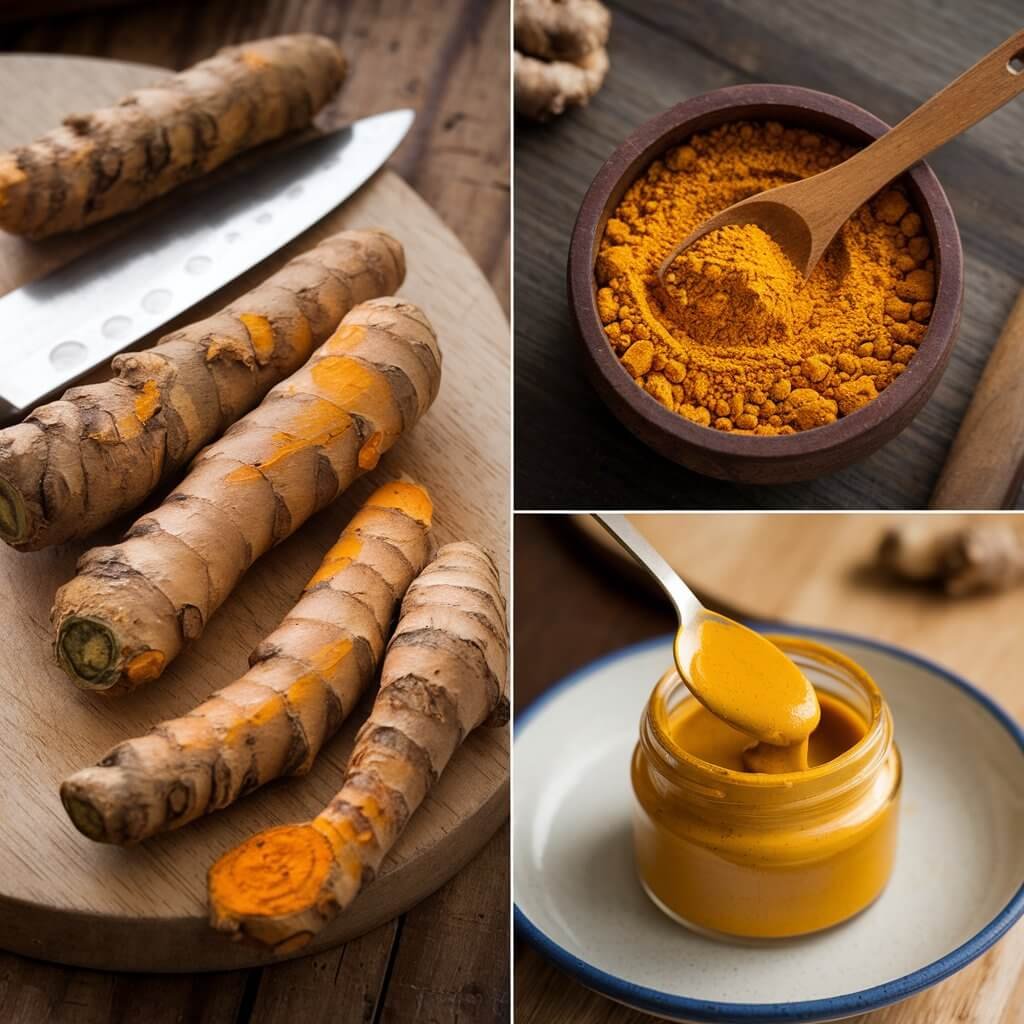
Turmeric comes in different forms, each with its own charm and best uses:
- Fresh turmeric root – This has a slightly milder flavor compared to the powdered form and works well when grated into soups, stews, or smoothies. Fresh turmeric is also used in pickles and herbal teas for an extra health boost.
- Turmeric powder – The most common form, turmeric powder is easy to store and use. It’s perfect for seasoning curries, rice dishes, roasted vegetables, and even eggs.
- Turmeric paste – This is often made by blending turmeric powder with water, coconut oil, and black pepper. It is widely used in Ayurvedic medicine and can be added to warm milk (golden milk), stirred into soups, or used in marinades.
And speaking of black pepper—adding it to turmeric isn’t just for taste. The piperine in black pepper increases the absorption of curcumin, making it even more effective.
B. Cooking Tips & Techniques
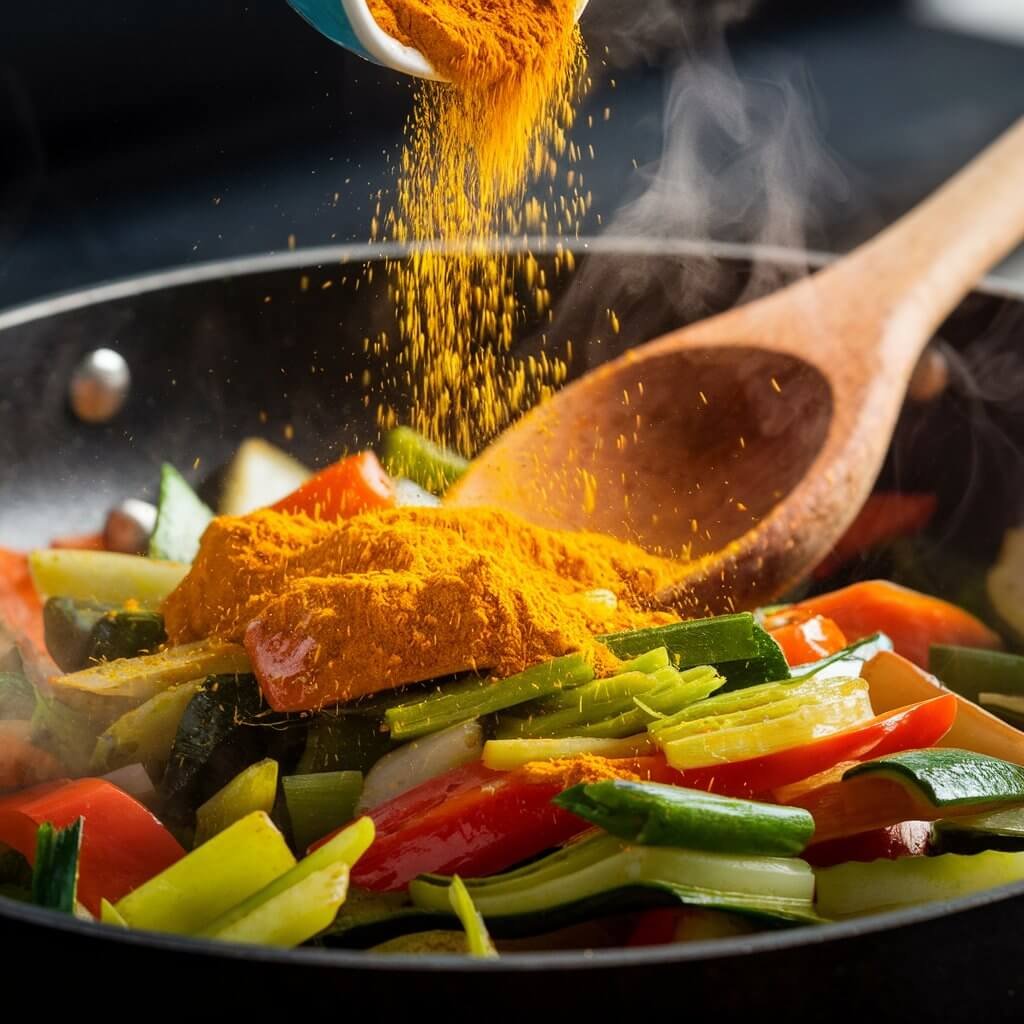
Balance is Key – The first time I added turmeric to a soup, I overdid it. The result? A bitter mess. Turmeric should be used in moderation—a little goes a long way. Start with ¼ teaspoon and adjust as needed.
Pair it with Complementary Flavors –Turmeric has an earthy, slightly bitter taste, so it’s best paired with warming spices like ginger, cumin, cinnamon, cardamom, and cloves. These combinations help balance the flavors and enhance the overall dish.
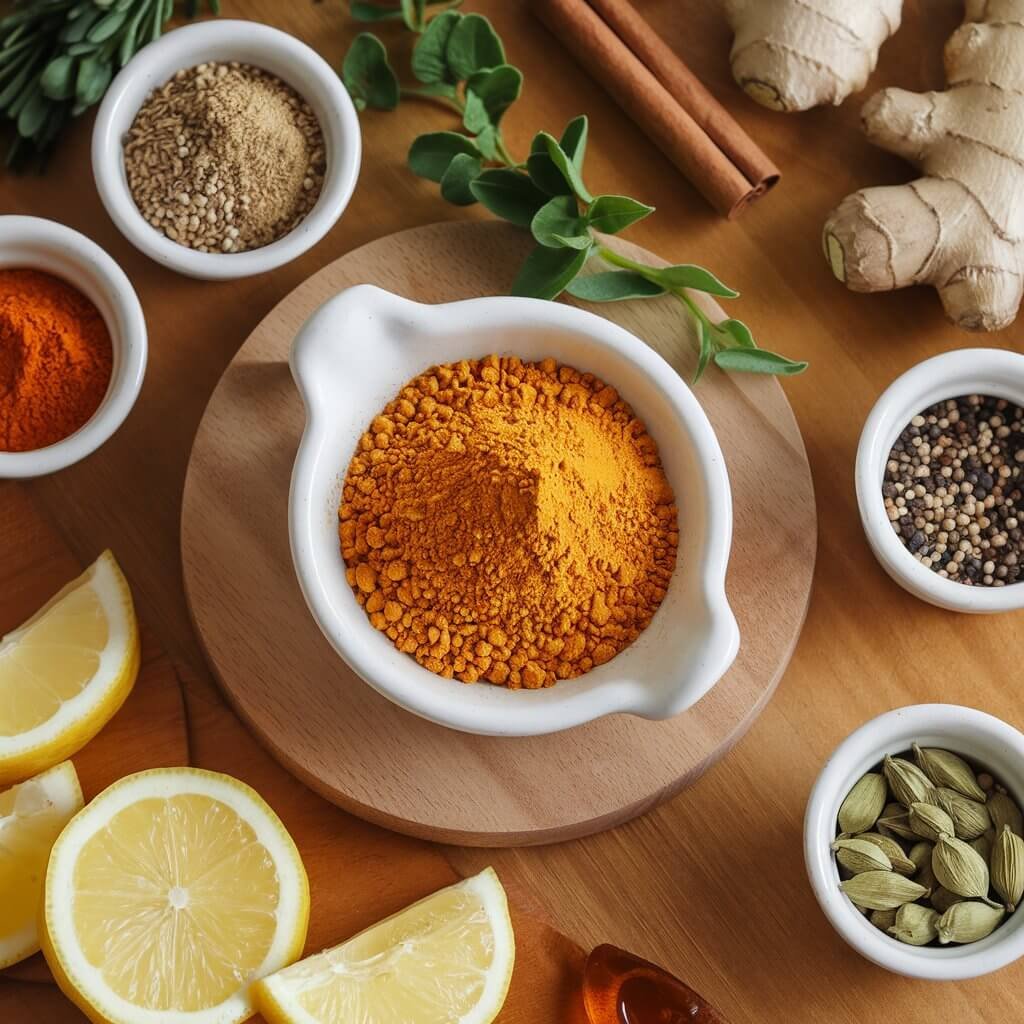
Cook It with Fat – Curcumin is fat-soluble, meaning it’s better absorbed when cooked with healthy fats like olive oil, coconut oil, or ghee. This is why traditional Indian dishes often include turmeric with ghee or butter.
Enhance Absorption with Heat – Cooking turmeric slightly in oil or broth helps release its beneficial compounds, making them easier for the body to absorb.
Use It in Unexpected Places – Turmeric isn’t just for curries. Try adding it to:
- Scrambled eggs or tofu for a golden color and depth of flavor.
- Salad dressings by whisking it with olive oil, lemon juice, and honey.
- Soups and broths for an immune-boosting kick.
- Smoothies with bananas, mango, or ginger for an anti-inflammatory boost.
- Baked goods like muffins, bread, and pancakes for a warm, slightly spicy note.
- Popcorn seasoning—mix turmeric with a little sea salt and nutritional yeast for a healthy snack.
Turmeric in Drinks – Beyond golden milk, turmeric can be used in:
- Herbal teas with ginger and honey.
- Turmeric lemonade for a refreshing summer drink.
- Turmeric-infused coffee for a unique twist on your morning brew.
- Homemade energy shots by mixing turmeric, black pepper, lemon juice, and honey.
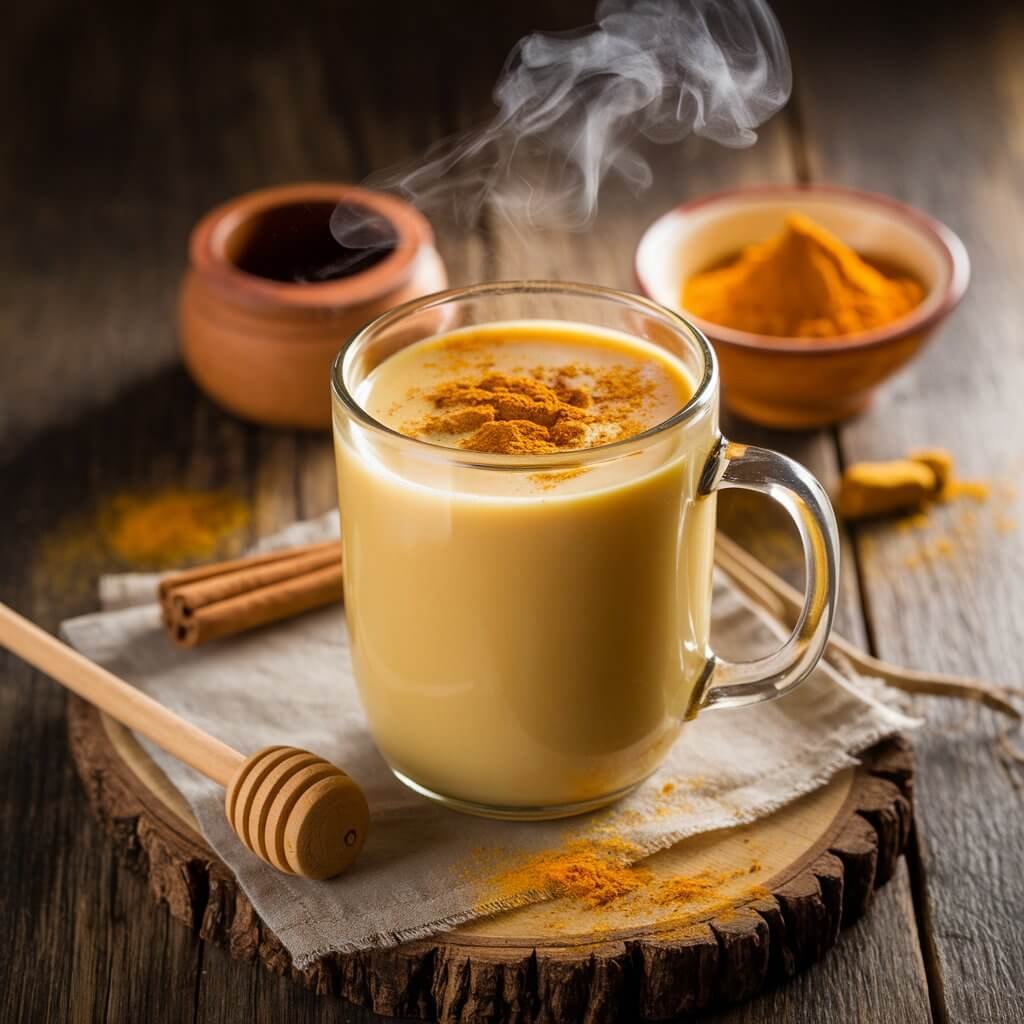
Marinades and Rubs – Turmeric adds depth and color to marinades for chicken, fish, tofu, and even roasted vegetables. Combine it with garlic, lemon juice, and olive oil for a flavorful seasoning.
Turmeric Rice and Grains – Adding a pinch of turmeric to rice, quinoa, or couscous while cooking gives it a golden color and subtle earthy flavor.
Soups and Stews – A teaspoon of turmeric can elevate the richness of soups, lentil dishes, and slow-cooked stews.
Turmeric Butter – Mix turmeric with softened butter and a dash of black pepper to spread on toast or melt over roasted vegetables.
By experimenting with these methods, you’ll unlock the full potential of turmeric in your kitchen.
Potential Side Effects and Precautions
While turmeric is a wonder spice, it’s not for everyone in large amounts.
- Watch the Dosage – A sprinkle here and there is great, but consuming excessive turmeric—especially in supplement form—can cause stomach upset.
- Blood-Thinning Effects – If you’re on blood thinners, consult your doctor before increasing your turmeric intake, as it has natural blood-thinning properties.
- May Interact with Medications – If you’re taking medication for diabetes or acid reflux, turmeric may interfere with its effectiveness.
- Staining Warning! – This might not be a health concern, but turmeric stains everything—from countertops to your favorite wooden spoon. Be careful when handling it!
Conclusion
Turmeric is more than just a kitchen staple—it’s a bridge between tradition and modern health. Whether you’re stirring it into a stew, sipping it in golden milk, or using it for its healing properties, this golden spice has something to offer everyone.
If you haven’t already, give it a try in your cooking. Start with a pinch, experiment with different dishes, and see how it transforms not only your meals but also your health. And remember, sometimes the best remedies have been in our kitchens all along.
What’s your favorite way to use turmeric? I’d love to hear about your experiences!

